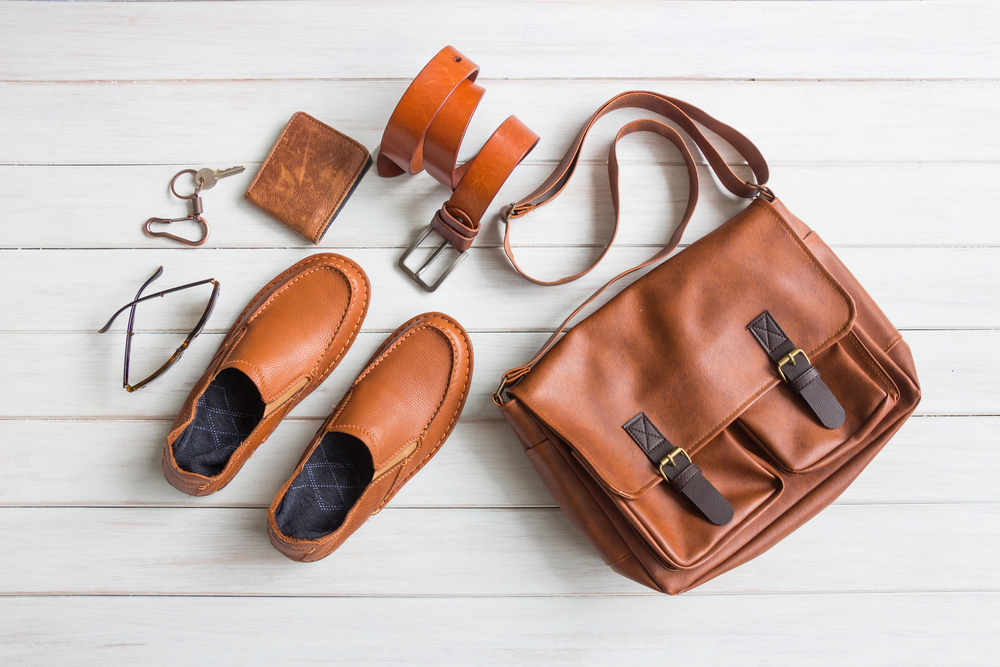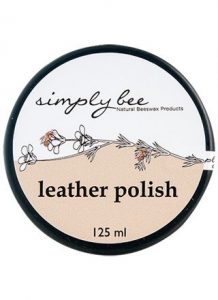
30 Jan Leather Up: How to be Fashionable and Still Wear Ethical Leather
Handbags, belts, boots, wallets, luggage – the leather industry has held the manufacturing monopoly on most of those lifestyle items for some time now. But as a global urgency towards environmental sustainability grows and an awareness toward eco-living becomes an ever-present fore-ground thought in most mindful consumers, the question of ‘which leather is best’ warrants some serious inquiry. Depending on where on the vegan, veggie or flexi fence you’re sitting, you may have various factors of importance to think of here. But coming from a purely environmental impact stance – here’s a look at the leather options out there, and which ones offer what it terms of wearing ethical so you can make clearer and lighter decisions.
Vegan Leather
The anti-animal leather movement exploded with a veritable buffet of vegan leather brands, all made from synthetic materials. That’s all good and well if not wearing leather that supports animal cruelty is your objective. But let’s clarify something quickly. Vegan doesn’t mean ‘naturalist’ or ‘eco-conscious’. Of course, you can be those things too if you are vegan, but as an adjective to leather ‘vegan’ simply means ‘not using or containing animal products’. It is certainly not synonymous with sustainable.
Most vegan leathers or leatherettes are made from a polyurethane, a less toxic plastic than PVC, with a fabric backing. These fabric names are common players on the vegan leather scene:
Lorica – a synthetic microfiber often used in sports footwear – also a blend of polyurethane and polyester
Kydex – this is PVC based vegan leather – waterproof and scuff resistant
Environmental Pros
- Requires far less energy to produce synthetic materials (it is said about 20 times less)
- It’s still a relatively breathable fabric if made with PU (polyurethane)
- You’re not contributing to animal cruelty
Environmental Cons
- It’s still a synthetic material so it’s not ticking any natural boxes
- Polyurethane, while far less toxic than PVC, still has its origins in fossil fuels
- Not necessarily biodegradable, depending on which plastic blend is used (purely veg plastics might be)
Silver lining
Word on the street is that scientists are working on a vegetable polyurethane that’s made from plant oils, which will offer a far higher biodegradability component.
Animal Leather
Once you start peering under the hood of this beast, you’ll realise it’s not a pretty picture. In fact, it’s rather complex. Almost every ‘genuine’ leather lover will tell you that their boots are a by-product of the meat industry and therefor absconded from any real implications. But this is simply not true.
Environmental Cons
Leather supports the meat industry
Since leather, unlike meat, doesn’t actually require refrigeration, it ends up being the most profitable part of the beef industry, essentially subsidising the continuation of animal husbandry. Even on ostrich farms, about 80% of their profits come from brightly dyed ostrich leather products. So, it’s probably more accurate to consider animal leather a major co-player of the meat industry, contributing healthily to the billion-dollar annual leather industry.
Co-product = shared responsibility
As a co-product, you have to accept that leather carries at least half the burden of the 18% contribution towards greenhouses gases, deforestation for farming and crop growth and the depletion of water resources. And then there’s the tanning.
Toxic tanning
Leather tanning, a process that makes the leather durable so that it doesn’t decompose, is actually one of the most detrimental parts to the creation of leather items and is cited by Scientific America as one of the top 10 pollution issues in the world today. Most tanning involves a process using chrome which leeches carcinogenic chromium (VI) into the water table. Even the leather products that advertise their vegetable tanning origins don’t always get a squeaky clean bill of eco-health according to the BLC eco leather rating. Chromium tanning also poses a massive health risk, directly affecting 1.8 million people.
Bottom line is if you even give half a hoot about the environment, you can’t make like an ostrich and stick your head in the ground on this front for the sake of fashion.
Environmental pros of real leather?
Hmmm. Unless you’re buying items made from second-hand leather or from a game animal that perhaps died of natural causes, you’ll be hard-pressed to find any environmental merits to creating this ‘natural’ but not so nature-oriented fashion fabric.
But surely it’s biodegradable?
Much of the toxic process it goes through ensures it’s an enduring material. Animal hide garments are often found in archaeological digs and those date back thousands of years. I imagine the next evolution of earth species will be able to find hard evidence of our love of leather fashionable buried by our sides.
Best approach if you’re a leather lover
- Look after your leather products with natural beeswax polishes if you do already own any. The kindest thing you can do to the environment is to make those products last and really serve a purpose.
- If you’re going to buy animal leather products, check if it has the EcoSure mark. This means it’s manufacturers actually subject themselves to stringent testing for environmental impact. This brand, however, doesn’t mean it has no impact on the environment. Just that in terms of leather production it has as low an impact as possible.
- Shop for upcycled leather items that have been made from post-consumer leather items (like bags that were once couches).
- Buy second-hand leather items – vintage is also very fashionable (if that weighs in on your decision making)
Vegetable & alternative plant leather
Vegetable leathers are quickly becoming the solution to the fashion industry and consumer need for a durable, wearable and sustainable leather-like material. Veggie leathers can be made from anything plant-based. A company in Rotterdam called FRUITLEATHER is making leathers from fruit waste. Asian markets are experimenting with banana skin leathers. And by now you’ve probably heard of Piñatex ™ – the pineapple leather that’s bringing additional income to subsistence farmers in the Philippines? There’s also MuSkin, a suede-like leather made from mushrooms and yet other leather alternatives are even being produced from recycled rubbers. On the whole, it’s a sunny outlook when it comes to fashionable alternatives to animal leather.
A closer look at two other plant leathers
Cork
Items made from cork are made from a material harvested from cork trees.
- One of the most sustainable materials available
- Trees aren’t cut down in the harvesting, as it is the bark that produces cork
- Highly durable material, so good substitute for bags and furniture
- Has a unique look compared to vegan leathers
Paper
Yep, paper. Since paper originally comes from trees, this falls under a plant leather of sorts. Paper leather also goes through a tanning process but a non-toxic one at that.
- If made from recycled paper, it climbs on the sustainability scale
- Quite durable
- Easy to clean (washes like fabric)
- Paper products are biodegradable
- Has quite a convincing leather-like look
Check out some paper leather products
Pros and Cons?
It’s hard to accurately consider the pros and cons for each of these as their processes are all still relatively new, so measuring true impact is tougher. Since each process is vastly different there are also so many other factors to consider. In time it might warrant another article, but for now, at least they’re providing beautiful and far more sustainable alternatives to animal leather.
But as with anything, if produced in excess, something else will have to give. Just because pineapple leather is a great alternative now, doesn’t mean it’s inconceivable that years from now, forests could be reduced for more slow-growing pineapples plantations, bananas or mushrooms for that matter. “Is your banana wallet organic and pesticide free?” Questions like this will, I’m sure, be raised in time as the leather tides change.
Once you know better
As I sit here writing this, I notice the aged, brown, plaited strap wrapped around the neck of my battered Klean Kanteen water bottle. It certainly looks like leather. That’s what everyone thinks the first time they see it. But it’s not. It’s actually a plant they called Tsonso in Mozambique near a village in Vilankulos. Our guide on the walking tour told us the villagers used to pull strips of bark off the Tsonso tree and, once dried, they could use it for pulling heavy objects through the unyielding sand.
I like this strip of ‘fake’ leather on my bottle. It was the first time I personally encountered a leather alternative and found myself astounded by how similar it looked. Now I keep it on my bottle to remind me that kinder alternatives almost always exist and to not simply accept things at face value.
At the end of the day, you can only do the best with what you know at the time. So if you’re getting as much information as you can and buying the most sustainable for what you can afford with your own moral compass as a guide, that’s all anyone can really ask for.




Pingback:Cruelty Free Living: Your Kitchen, Closet and Makeup Kit - Faithful to Nature Natural and Organic Blog
Posted at 09:25h, 19 February[…] and conservative ways with awesome ethical substitutes – think biodegradable glitter, vegan leather and DIY recyclable children’s […]
Pingback:Leather Up: How to be Fashionable and Still Wear Ethical Leather | Andrea Fedder
Posted at 10:04h, 05 April[…] Continue reading this article on the Faithful to Nature blog. […]